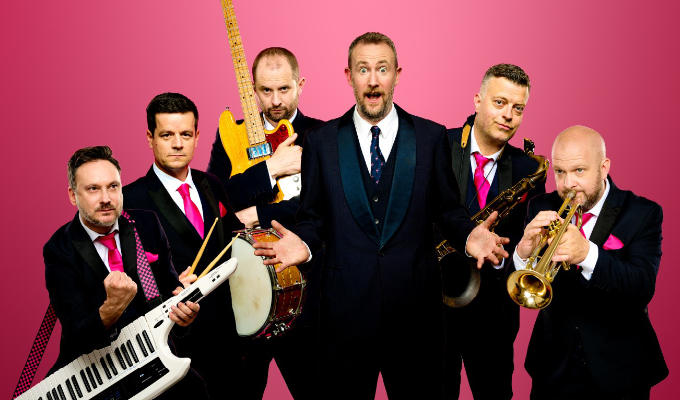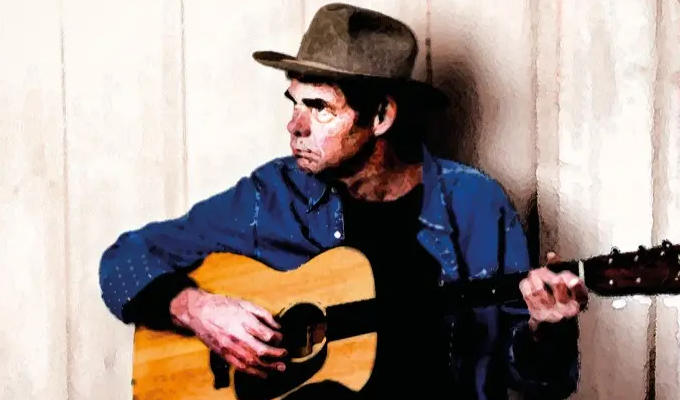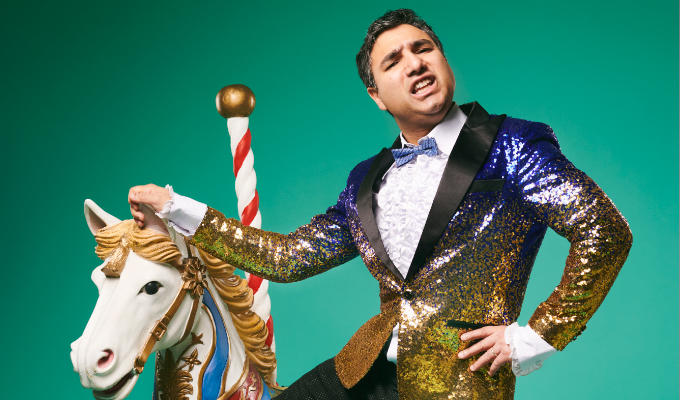Why jokes ruin comedy
Charlie Partridge thinks gags are over-rated
A familiar bit of advice given to many aspiring open-spot comedians (apart from to gig at every opportunity) is to trim the fat off one’s set – aiming to cut to the punchlines more quickly and increase the laughs per minute. The understandable logic behind this is that one would expect a better comedian to get more frequent laughs. Quantity is the focus. That is not say that one might not also consider the funniness of a gag, but the fact remains that gags, and their quantity, are given reverence.Although the technique can be helpful, this philosophy is at odds with what my own comedy background in improvised comedy, as a former director of the Oxford Imps, has taught me. One of my beliefs is that there are different qualities of laugh and some are more rewarding than those derived from gags. I am not saying that this is a distinction stand-ups are unaware of, but it is certainly infrequently addressed, perhaps due to a lack of vocabulary.
As a point of clarification, by ‘improvised comedy’ I refer specifically to the style of performance most commonly associated with Whose Line Is It Anyway? and The Comedy Store Players, as opposed to the freewheeling stand-up style of the likes of Ross Noble. Often improvisers will categorise shows as ‘short-form’ or ‘long-form’. I find this distinction unhelpful and dull, but for the sake of detail, ‘short-form’ is what Whose Line Is It Anyway does and involves performing games or sketches based on audience suggestion, often with a gimmick. ‘Long-form’, as you might expect, can refer to one long improvised play, but also to a whole other mess of things, with a basic requirement that there is some sort of recurring theme. Many groups will label themselves as ‘long form’ simply because it is seen as more advanced.
For me, improvisers are far more usefully categorised by those who go for the gag and those avoid gags and instead go for something more subtle. Gaggers will make witty comments about the scene they are acting in, often acknowledging its silliness, awkwardness or stupidity.
For those who avoid gags, improv’s real humour lies in engaging your audience in the traits of your character and then mercilessly exploiting these traits, escalating tension and telling great stories. Clever one-liners are just the icing on the cake.
Of course, as with any system of artistic categorisation, boundaries are blurred and different individuals will vary with how often they go for the gag over going for the story. My own preference is to go for the engaging. It is my experience that this brand of improv at its best is incomparably better than gag-centric improv at its best. Audiences don’t just laugh, they are rapturous having been given multiple plot-lines intricately woven together, characters they care about, heightened emotion and the satisfaction of a good story well-told, all without time for editing, correcting or considering. All of this contributes to an entirely different quality of laugh, one that is far more rewarding both for performer and audience.
Returning to stand-ups, it is not the case that stand-ups do not exploit these different quality laughs – many do so beautifully (Dara O Briain is a brilliant raconteur as well as gagsmith, Isy Suttie exquisitely uses sincere emotion). Yet despite being aware of using different types of laugh to play with the energy throughout a set, there still remains the reverence towards gags. Many may think my naïve shunning of quantity for quality perhaps demonstrates the more patient audiences I have been privileged to play as an improvised comedian, but that sort of stuff wouldn’t work in front of a stag do or Christmas party.
A (slightly conceited) reply is I think it is acceptable for an artist to pick the sort of audiences to which they wish to appeal. I’d be quite happy to have an act that was appreciated more by a considered, well-mannered audience who better controlled their drinking, even if it didn’t go down well in front a boozy crowd looking to undermine you.
Beyond stand-ups, I also feel that the quality/quantity distinction could better be headed by broadcast commissioners for comedy. A recent trend with commissioning comedy seems to be (1) identify a target demographic (e.g. couples aged 25-35), (2) approach comedians/writers within that demographic, (3) whittle them down to the writing team you want and get on with making the show.
A side-effect of this process is that when a demographic becomes desirable to target, several broadcasters will attempt to create similar shows, often with uninspiring results. Some have argued that the reasons these shows are not inspiring is because it is harder to write to a brief; the funniest broadcast comedy shows seem instead to be very much the babies of their creators, imprinted with their personalities, such as The Mighty Boosh or Spaced. While this may be to some extent the case, I also suspect it is in part due to both comedians’ and commisioners’ adoration of gags.
Following the success of E4’s Skins last year, one of the demographics to target became the boozing, fucking and partying 16 to 20-year-old age group. Falling close to that range, I am aware of a few projects to create a sitcom/sketch show for the Skins generation. This focus on gag quantity has often been very much apparent in the process, even if a line is completely extrinsic to the plot and makes the character look unnatural.
Some ‘gags’ whilst following a comedic logic, like a child’s joke, are not funny, and cramming ‘just one more’ in makes for cringeworthy viewing. Obviously this is not the case for all commissions as some great programmes do get made, but I’d suggest that creators of great broadcast comedy are bringing other qualities besides laughs per minute to their shows, qualities painfully lacking from some ‘that’s-not-funny’ sketch shows.
One question to me now might be, if this quality/quantity distinction is so important, and is made so lucid by improv, why are improvised performers not more common on both live and broadcast stages?
First, compared to stand-up, improv obviously has higher overheads with money being split between more people. Of course the same could be said of sketch, yet the success of sketch shows is still very much more apparent than the success of improv shows in the UK.
I think improvisers are to blame for their lack of imagination; so rarely are shows very far from the Whose Line Is It Anyway format; some even do exactly the same repertoire of games. Also, the British love for wit means that the improv preference in this country lies more with the gaggy. Paul Merton, pictured demonstrates fantastic wit, he is hilarious and his success is justified, but I have never watched him play a character I care about.
In North America, improv will often play a bigger part of a city’s comedy scene with many personalities like Will Ferrell, Jon Stewart, Mike Myers or Kristen Schaal famously being alumni of improv institutions like Chicago’s iO and Second City, New York’s Upright Citizens’ Brigade or LA’s The Groundlings.
I have even come across the saying, ‘to gag is to sin’ at these institutions and in the context of creating something emotionally really, a gag does have the power to wetly deflate any delicious, comedic tension which might have been cooked up.
I may quickly have to address comedic egos, notoriously fragile and prone to crybaby responses. I am neither saying that I do not like stand-up, or jokes, nor am I saying that UK improv is bad, nor am I saying that no comedians get the sort of laughs I have been describing.
What I am arguing is that being aware of how one goes for these other quality laughs is an important aspect in creating comedy and one which deserves the same reverence paid to gags and wit. If I am being provocative, it is to provoke debate as to what the characteristics of good comedy are. There is a difference between prettiness and beauty. Both are valuble and desirable, but one is more complex. In the same way, gags and comedy are not synonymous.
Published: 12 Mar 2008






